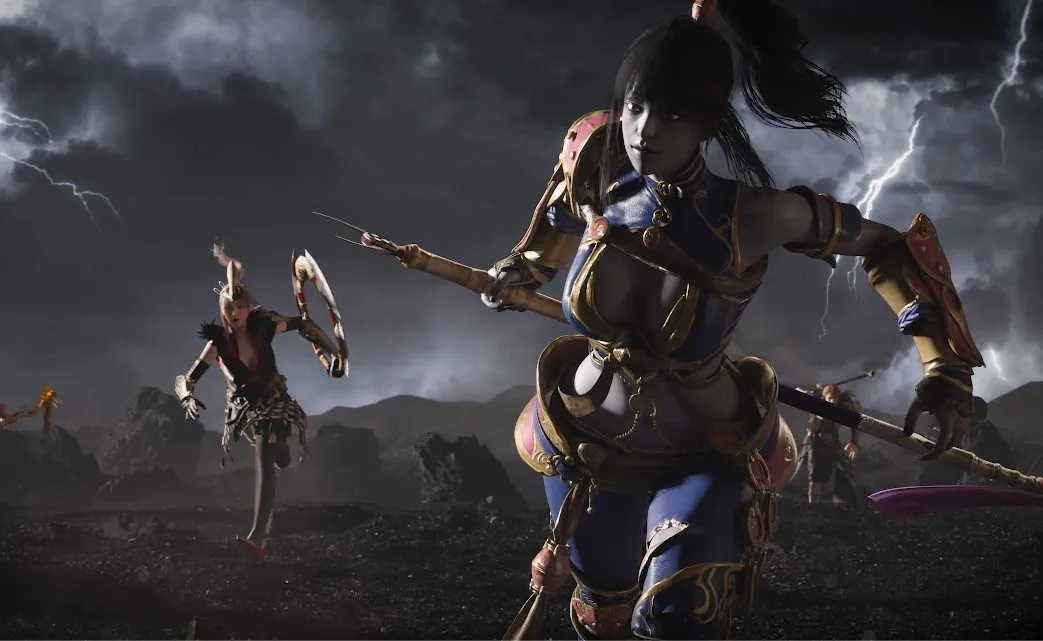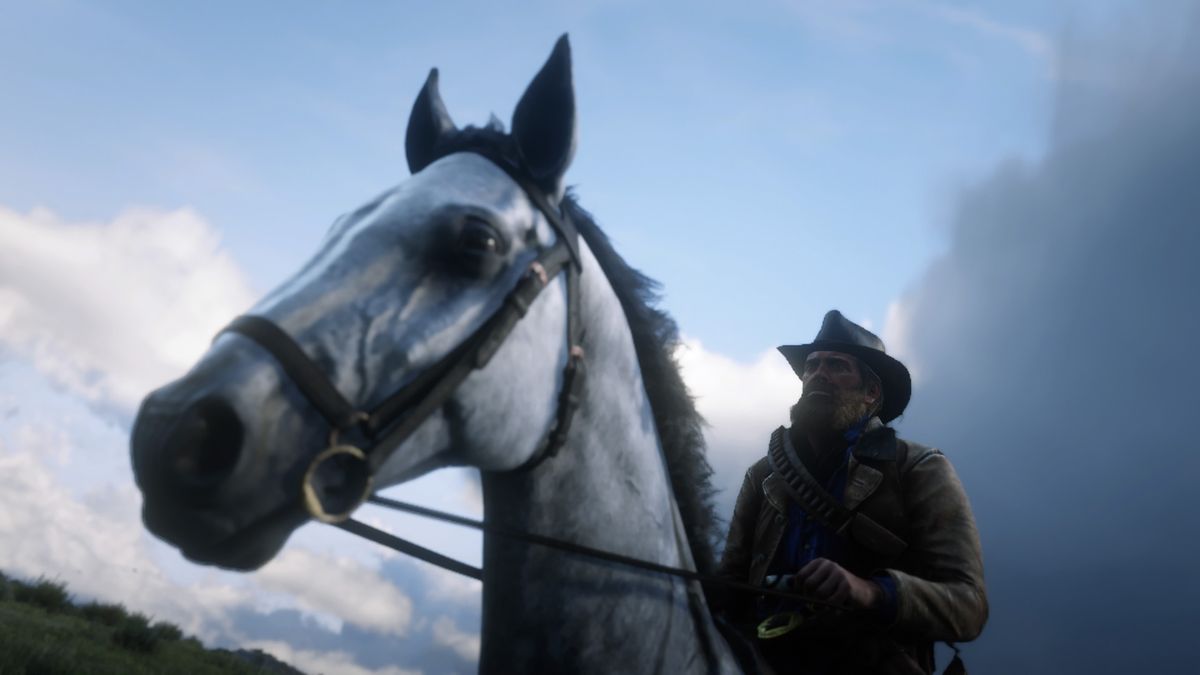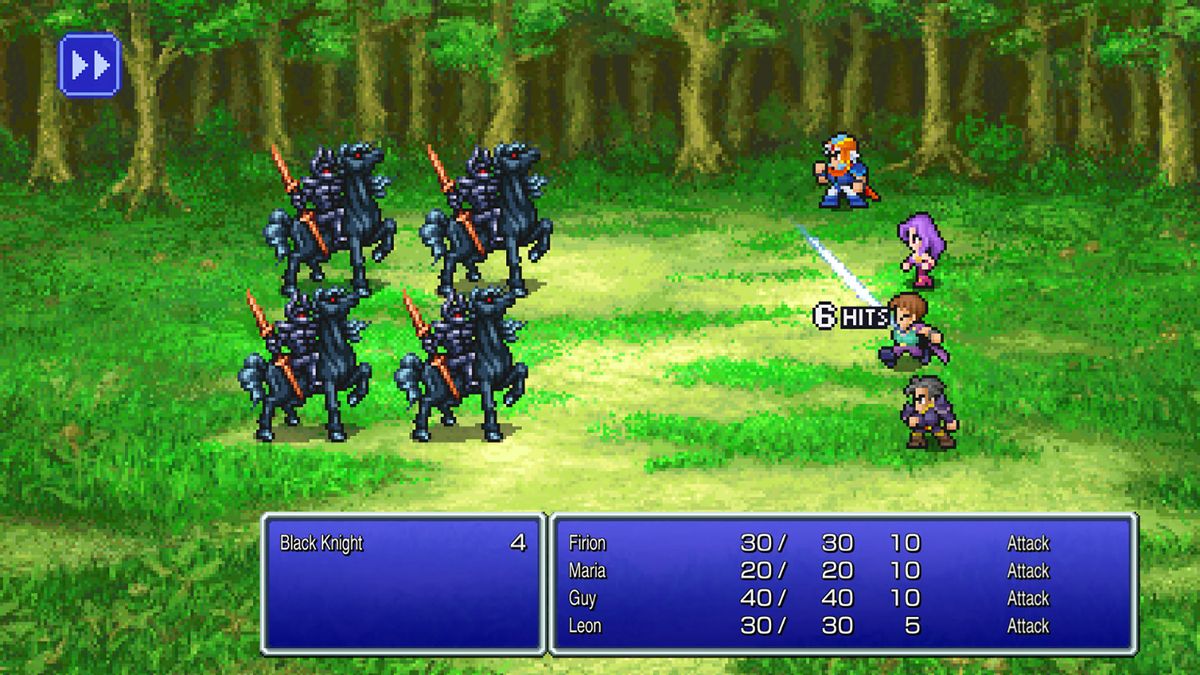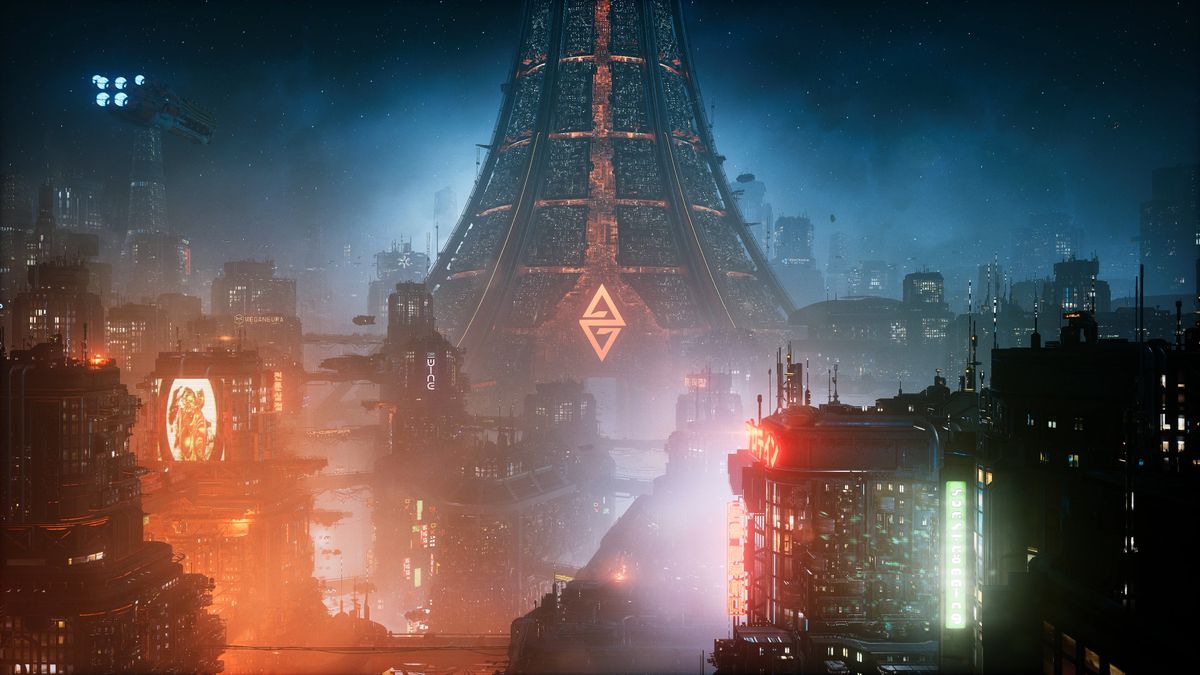Game Articles and Videos Thread
- Thread starter hanselthecaretaker
- Start date
Saw that this afternoon. Thank you for thinking of me.
Why the hell would they need the specifications subject to (I assume) the Official Secrets Act? I can look up the relevent things they'd need for game balance on Wikipedia. Its top speed and all that shit is right there. 37mph on roads and 25mph off road in case anyone cares.Someone in War Thunder a month back literally posted the Challenger 2 Specs in a classified/restricted document to get the Devs of War Thunder to make the tank faster. Which they were right about, if the real-life Challenger 2 was as fast as the War thunder one, the British Army's tanks would be useless. But they are about to get arrested right about now.
Yeah I put this video up in my "formal" thread of this. I felt it made sense for that thread.
Here it is.

(Update) August PS Plus titles revealed as Hunter's Arena, Plants vs. Zombies, and Tennis World Tour 2
The PlayStation Plus titles for August 2021 have been revealed, including PvZ: Neighborville, Hunter's Arena, and Tennis World Tour 2.
August's PS+ games continue this year's trash offerings through the service. The membership has been incredible disappointing as of late, and while I don't much care about the free games as much as i just need multiplayer services, it's still nice to get something decent monthly. Except i can't remember the last time there was something worth while on offer.
Buhbut it’s got chics with big cans in skimpy battle dress! And also some other…well,
(Update) August PS Plus titles revealed as Hunter's Arena, Plants vs. Zombies, and Tennis World Tour 2
The PlayStation Plus titles for August 2021 have been revealed, including PvZ: Neighborville, Hunter's Arena, and Tennis World Tour 2.www.destructoid.com
August's PS+ games continue this year's trash offerings through the service. The membership has been incredible disappointing as of late, and while I don't much care about the free games as much as i just need multiplayer services, it's still nice to get something decent monthly. Except i can't remember the last time there was something worth while on offer.
Kinda mildly curious about that newer PvZ but might save that for Steam.
It's like BR games and tennis. Big deal.Buhbut it’s got chics with big cans in skimpy battle dress! And also some other…well,
Kinda mildly curious about that newer PvZ but might save that for Steam.
Would've completely missed this if it weren't for hearing bout it on recent podcast, what with Acti-Blizz dominating the news by tripling down on being the worst;

 kotaku.com
kotaku.com


First It Was An Assassin's Creed Expansion, Now It's Ubisoft's 8 Year Nightmare
Inside Ubisoft Singapore’s struggle to ship Skull & Bones
 kotaku.com
kotaku.com
So they have to release the game either way due to taking tax credits from Singapore government. Which has made my interest in this shoot from "zero" to "oh dis gonna be good." Can already sense Matt excitedly preparing his Wha' Happun for this garunteed train wreck.A few people said it was cursed. Others simply had no idea what they were supposed to be making. “Nobody knew what the fuck they were doing,” said one former developer.
Skull & Bones development began back in 2013, as a multiplayer expansion to Assassin’s Creed IV: Black Flag that would release as a post-launch update, three sources with knowledge of the project’s origins said. The expansion soon took on a life of its own, however, morphing into a full blown MMO-like spin-off with the working title Black Flag Infinite, and later a brand new pirate game called Skull & Bones.
The game made a big splash with an on-stage reveal and hands-on demo at E3 2017, and returned a year later with a second polished demo, but has since disappeared. Sources are split over what happened. Some say despite the well received E3 blowouts the game effectively didn’t exist. Others argue that a version of what was playable at industry events could have launched roughly on time in Early Access and matured in the wild as other games-as-a-service have.
Years later the game is still struggling to take shape and people are running on empty.
“A lot of stuff still doesn’t make sense,” said one former developer. “Just polishing it at this point would be a waste of time.”
Skull & Bones was originally supposed to launch in late 2018. Then sometime in 2019. Then sometime after March 2020. Then sometime before March 2022. And now it’s due to come out before March 2023.
That’s four big delays in just three years. Even from a company with a reputation for rescheduling like Ubisoft, it raises red flags about the project’s future and the fate of those working on it. Skull & Bones may come out some day, and it might even end up being great. But up to this point, its development has been marred by just about everything that can go wrong in blockbuster video game production.
“No one believed February 2022 [for launch], but you always hope,” one current developer told Kotaku following the latest delay, announced during Ubisoft’s May investor’s call.
That earnings call found Ubisoft execs scrambling to explain yet another setback.
“Production, led by [Ubisoft] Singapore, has been advancing well over the past 12 months, and the promise is better than ever,” Ubisoft CFO Frederick Duguet said during the same meeting. “The additional time will allow the team to fully deliver on its vision.”
But interviews with more than 20 current and former Ubisoft developers, as well as those with knowledge of the game, its troubled development, and the studio leading production on it, tell a different story. Skull & Bones never had a clear creative vision behind it, suffered from too many managers vying for power, and was plagued by almost annual reboots and mini-refreshes, they said. Years into development basic questions around the game’s core design still haven’t been nailed down, even as ambitions for the would-be game-as-a-service continue to mount within Ubisoft’s head Paris office.
All of these people were granted anonymity because they were either not authorized to speak to the press about the project or feared that speaking out about a past employer might hurt their careers in the video game industry.
Nearly eight years after it was first conceived, Skull & Bones has blown through its initial budgets. According to three sources, the project has already cost Ubisoft more than $120 million, with that number continuing to balloon as hundreds of developers from other Ubisoft studios continue pitching in to try to ship the game without any more delays.
Ubisoft developers receive project-based bonuses based on how well their games do. Those attached to big, nearly annual franchises like Assassin’s Creed are often assured healthy payouts. But Skull & Bones was so in the hole, sources told Kotaku, that the project had to undergo a financial write-off internally for its developers to still have a shot at any sort of payout.
“No one wants to admit they fucked up,” said one developer. “It’s too big to fail, just like the banks in the U.S.”
“If Skull & Bones were at a competitor it would have been killed 10 times already,” said one former developer.
More generously, another former developer said that Electronic Arts or Take-Two for example probably wouldn’t have attempted it in the first place. Eitherway, Ubisoft has bet big on the multiplayer pirate adventure and is determined to ship it one way or another. In part, that’s because live service games have become an increasingly important and lucrative part of the Assassin’s Creed publisher’s portfolio. But three sources also told Kotaku that a deal with the Singapore government requires it. In addition to hiring a certain number of people at its Singapore studio in exchange for generous subsidies, they said, Ubisoft Singapore must also launch original brand new IPs in the next few years.
Production has dragged on for years, but many current and former developers say they still have little to show for it. One current developer compared the project’s trajectory to Bioware’s Anthem, another big multiplayer game-as-a-service that looked great in demos but launched broken and incomplete. Some on the core team developing Skull & Bones are hopeful they can still avoid a similar fate but are also incredibly desperate to ship the game and move onto something new.
“Just having people working for four or five years on something that doesn’t move forward, that destroys anyone,” said one former developer.
Things always go wrong during game development, but with Skull & Bones they rarely seemed to go right.
Ubisoft eventually decided to leave Black Flag behind and create a new AAA IP that would still revolve around ship combat but with its own narrative and visual identity. And so Skull & Bones, codenamed “Project Liberté,” was born. But the real trouble was just getting started.
“On paper Skull & Bones looks like it’s an easy game to make, but it’s really not,” said one former developer.
Skull & Bones has been a lot of things in the years since it entered pre-production, developers told Kotaku. At one point, it was set in the Caribbean. Later, it moved to the Indian Ocean. One version was inspired by Sid Meier’s Pirates! and played out in a fantastical world called Hyperborea through branching multiplayer campaigns that lasted weeks. Another revolved around an elaborate floating base called Libertalia—a “cathedral on water,” as one developer described it—inspired by the mythical pirate colony of the same name. Most of these ideas never made it past the prototyping phase but still managed to take up an increasing amount of the Singapore studio’s time as developers reworked designs and concepts for a game whose core premise appeared to change with the wind.
By 2017, the studio tried to reign in its ambitions to focus on ship combat, and Skull & Bones was once again reborn, this time as a session-based shooter modeled after Rainbow Six Siege but with boats. This was the version that was revealed at E3 2017, but Ubisoft wasn’t ready to ditch dreams of a grander pirate exploration game just yet. It would still need a world and quests beyond a monetizable PVP grind. So in 2018, Skull & Bones returned to E3 with a PVE free roam mode called “Hunting Grounds.” Here, similar to The Division’s “Dark Zones,” players could loot hideouts, fight one another, or work together to take on more powerful AI opponents.
But this version of the game would eventually get scrapped too, and by 2019, survival games like Rust and Ark: Survival Evolved became Skull & Bones’ new guiding stars. In addition to the sailing, fighting, and looting, there would be resource management elements like crafting and trading. There would also be harsher stakes for dying, adding a roguelike-lite edge to the pirate fantasy. It was a particularly messy change in direction, according to five current and former developers. The project’s existing engine tools were ill-equipped to take players exploring on land for resources, and the additional layers of inventory were a pain to try to implement, they said.
By 2020, direction had shifted yet again, four current and former developers told Kotaku. The latest build of Skull & Bones will be different still, though many remain unsure what shape the finished game will ultimately take. It’s not just that it isn’t close to the finish line yet; it’s still not even clear where the finish line is.
“The game is still evolving,” said one current developer. “Everyone knows what an Ubisoft game is supposed to be and the design simply isn’t there yet.”
Ask five different Skull & Bones developers what went wrong, and you’ll get 10 different answers. Some blame the lack of clear direction from above, with decisions filtering through too many senior leads and few willing to take responsibility for making difficult calls. Others feel the project was rushed from the beginning, always settling on the quickest short term solution to a problem that would inevitably become a major headache later on. Ubisoft Singapore is also new to shipping original blockbuster games, and some developers believe the studio simply wasn’t ready yet, while others blame Editorial (Ubisoft’s Eye of Sauron-like creative division housed in its headquarters) for trying to design the game by committee. Things always go wrong during game development, but with Skull & Bones they rarely seemed to go right.
From the beginning, there were culture clashes on the team, several current and former developers said. Those coming from the Assassin’s Creed side were used to top-down decision making and handcrafting everything down to the details. Coming off of managing a free-to-play multiplayer game, however, the Ghost Recon Phantoms team was used to constantly iterating and working horizontally.
In theory, both teams’ expertise was intended to complement the other. But in practice, some former developers said it simply added to the chaos.
The project is now on its third creative director, Elisabeth Pellen, who was formerly a vice president of Editorial in Ubisoft’s Paris office. Before her, it was Justin Farren, who some said had great ideas but lacked a clear vision for the game that aligned with HQ’s ambitions. And before that, it was Sebastien Puel, a longtime Assassin’s Creed producer from the Montreal office who had little experience in designing a multiplayer game, they said. Each new creative director would be accompanied by a big leadership shakeup, five current and former developers said. Producers, game directors, and creative leads would all jump ship or be pushed overboard during these periods, a pattern of upheaval that has taken a massive toll over the life of the project.
“Every time we got feedback from Paris they would just freak out and change everything, and then change the people working on it, and that happened multiple times,” said one former developer.
Each new regime would try to put its own mark on the project beyond staffing but would eventually relearn the same hard lessons as earlier groups. Fundamental questions like, “Do you play as a pirate or do you play as a boat?” were constantly closed and reopened. At E3 2017 and 2018, it was the latter, but after Pellen took over, the team was tasked with letting players go ashore to explore islands on foot. The existing tools and asset pipelines were for ships on water. Land locomotion would require new ones. According to three current and former developers, Skull & Bones lost six months to a year on issues like these alone.
Production was moving ahead, but the designs were regressing.
“They started asking the whole team for the first 2016 design documents because that’s what they wanted to do again,” said one former developer. “We went full circle just plus a giant layer of crafting.”
Other questions around quest structure, character progression, and having a seamless openworld versus smaller instanced spaces would get debated, seemingly closed, and then later relitigated. Would the game have huge maps like Ubisoft’s other games, or would it be broken up into separate chunks like, say, Warframe? One team would choose one set of trade-offs. A new team would come in and pitch a different set. Eventually, however, they’d run up against the same limitations as before.
“It’s a classic case of mismanagement for eight years,” said one former developer. “Instead of adding layers of value we kept running around in a loop.”
These messy prototyping phases aren’t unusual, but in Skull & Bones’ case, it never stopped. Meanwhile, despite each new reboot, teams were tasked with building something based on blueprints that kept dramatically changing. In 2015, there were roughly 100 people working on Skull & Bones, according to three sources. By 2019, there were closer to 400, with many from other Ubisoft studios pitching in despite ongoing tinkering with fundamental aspects of the game’s design.
Instead of dropping back down to a small core team of several dozen who could “find the fun” and hammer out a new vision for the game, hundreds were left to keep working on unclear priorities, never quite sure just how dramatically the scope and direction had actually shifted.
“Whenever the game shape pivoted, the requirements, the progression, and the economy and the player motivation would also have to pivot,” said one former developer. “In the session-based shooter version of the game, pretty much all you care about is maybe ammunition, how good you are at turning, and what your level is. Maybe when you become a survival game, you need to care about things like how big is my hold? How many bananas can I carry? How do I maximize my profits by selling this stuff?”
Throughout these debates, teams were given work to do to keep them busy. Some happily obliged, turning out high quality assets and designs the same way they might if they were supporting the Montreal or Quebec studios on the latest Assassin’s Creed, only for that work to become obsolete. Others took their foot off the gas, tired of beating themselves up while the project spun its wheels.
While some people Kotaku spoke with said crunch—an industry term for extended periods of overtime—was common in the lead up to E3 showcases or milestone reviews in Paris, others said it wasn’t an issue at Ubisoft Singapore like it is at many other places. Instead, they said the exhaustion and burnout came from working on the same project for months and years without ever seeing it meaningfully progress.
“You don’t let your team push too hard when nothing is settled,” said one former developer. “You don’t push quality to the sky on stuff that will just get thrown out months later.”
Throughout these years, a great “exodus” from the studio continued, said three current and former developers.
“It’s one of the only projects I’ve seen where as we were going, the team became more and more junior because all the talent and all the experience would leave constantly,” said one former developer. “People would learn about the project, see how it works and everything around it, and then leave. It was constant.”
While some people bailed because the project kept stalling, others were poached by Riot, Tencent, and global tech giants like Facebook with lots of open roles in growing offices around the region. Not only did these places pay much better, several former developers told Kotaku, they were also less dysfunctional.
The Glassdoor review page for Ubisoft Singapore is full of complaints about uncompetetive salaries, wage discrimination, office politics, and toxic managers that made it hard to succeed and ultimately drove people away. They also may have been responsible in part for Singapore’s failure to get Skull & Bones out the door. According to several sources, some senior managers would surround themselves with “yes men” (they were so often men), refuse to listen to suggestions or concerns repeatedly raised by those on the studio floor, and then sell Paris on a version of the game that couldn’t be made given existing resources and timetables. Those who continued to voice their dissent would eventually be “disappeared,” either to another team, another project, or another studio, they said.
“The toxic culture permeating the Singapore studio is in no small part responsible for most of the production issues—reboots, rebrands and re-reboots—that have plagued Skull & Bones for a decade,” one former developer said.
Or as another put it, “Since the beginning, this project has always been driven by fear.”
Shit leadership, overworked and underpaid staff, toxicity galore, and a "creative" process that's completely ass-backwards and rudderless? Oh, Ubisoft!Would've completely missed this if it weren't for hearing bout it on recent podcast, what with Acti-Blizz dominating the news by tripling down on being the worst;

First It Was An Assassin's Creed Expansion, Now It's Ubisoft's 8 Year Nightmare
Inside Ubisoft Singapore’s struggle to ship Skull & Boneskotaku.com
So they have to release the game either way due to taking tax credits from Singapore government. Which has made my interest in this shoot from "zero" to "oh dis gonna be good." Can already sense Matt excitedly preparing his Wha' Happun for this garunteed train wreck.

Red Dead Redemption 2 player finds alien carving in a rock
That sure is an alien lifeform depicted on a rock
Pretty sure I’ve already seen this, but simply thought nothing of it as the game is no stranger to weird random shit.
Also, enough beating around the bush with this trolling bs -

Norman Reedus posts disturbing selfie with Silent Hill 3 bunny
Warning: Rapidly flashing lights inside.
Just announce something already. This rather shit year in gaming so far could use it.
I'm entirely teased-out for any Silent Hill shit right now. Like, all its clothes are on the floor and it's using the third bottle of chocolate syrup and I'm sound asleep.Also, enough beating around the bush with this trolling bs -
Just announce something already. This rather shit year in gaming so far could use it.
Norman Reedus posts disturbing selfie with Silent Hill 3 bunny
Warning: Rapidly flashing lights inside.www.pcgamer.com
Evil Within 1 and 2 were good enough for me to fill that void a long time ago.I'm entirely teased-out for any Silent Hill shit right now. Like, all its clothes are on the floor and it's using the third bottle of chocolate syrup and I'm sound asleep.
Small psa-

 www.pcgamer.com
www.pcgamer.com

The Final Fantasy Pixel Remasters are out now and there's already a way to improve their crappy font
This simple fix makes the text look a lot better.
Look at that, another cyberpunk game better 2077.


 kotaku.com
kotaku.com


The Ascent Makes Good On Cyberpunk 2077's Promise
It’s staggering just how good The Ascent really is
 kotaku.com
kotaku.com
Glad I'm not the only one who things the font looks fucking ugly....and I say this as someone who normally doesn't care so that probably means something.Small psa-

The Final Fantasy Pixel Remasters are out now and there's already a way to improve their crappy font
This simple fix makes the text look a lot better.www.pcgamer.com
